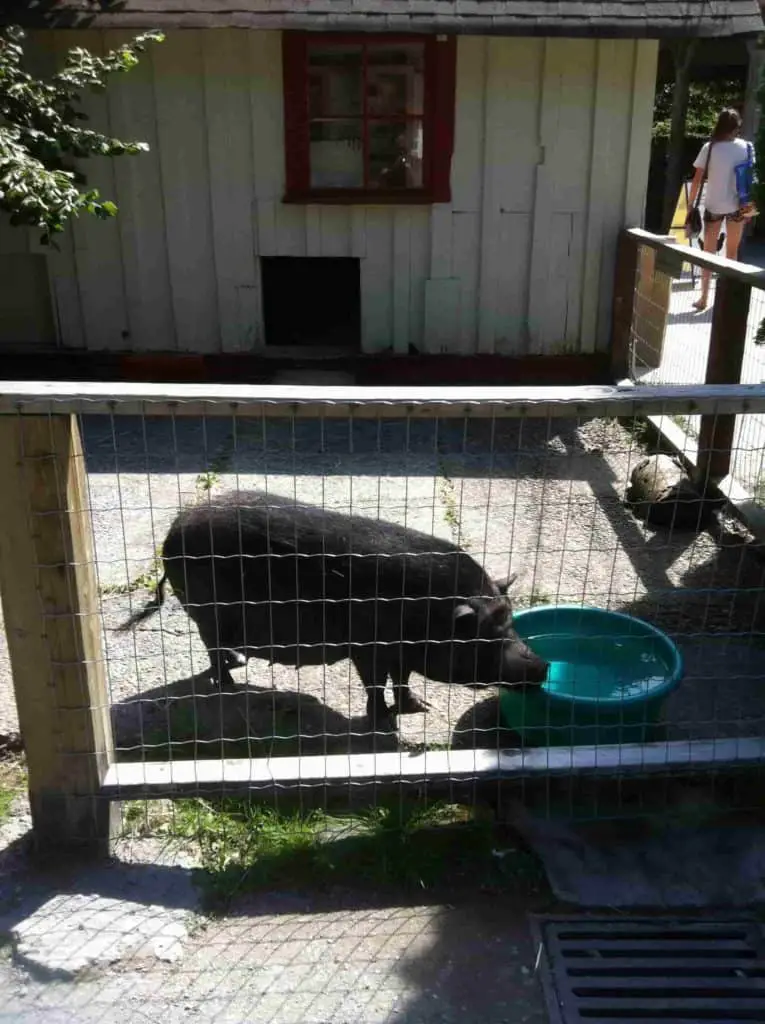Pig dehydration is actually more common than you think, and taking immediate action is the only way to save your pig from more serious problems.
So how can you rehydrate your pig? The process involves getting your pig to drink small amounts of water, then slowly increase the amount until the ideal daily water intake is reached. Adding electrolytes to the water is also recommended, depending on the case.
Around 70% of a pig’s body is made up of water. Knowing this, you can probably imagine how sick your pig can become without the right amount of water intake everyday.
This is why rehydration is important the moment you notice signs of dehydration in your pig. This is one of those problems that you just can’t leave alone, unless you’re okay with your pig getting sicker

Tips in Rehydrating Your Pig
To some extent, rehydrating your pig may seem simple to an outsider’s point of view. It’s just a matter of reintroducing water so that your pig’s bodily functions can start going back to normal.
However, it really isn’t just that.
For one thing, the reintroduction of water into the pig’s system should not be sudden because this may shock the pig’s system especially if it has started to suffer from salt poisoning as a result of the minimal water intake.
Don’t give your pig unlimited water just yet. You can ask your vet how to transition properly.
Start little by little until such time that it reaches the optimal water intake for its age or size. In case you’re wondering what the proper water intake is, just follow this chart:
Nursery (0 to 60 lbs)
Grower (60 to 100 lbs)
Finisher (100 to 250 lbs)
Gestating pigs
Lactating pigs
0.7 to 1 gallon
2 to 3 gallons
3 to 5 gallons
3 to 6 gallons
5 to 7 gallons
The Role of Electrolytes in Rehydration
Check your vet as well and see if he would recommend adding electrolytes to your pig’s water.
Electrolytes are chemical substances that your pig needs to make sure its bodily functions are working at optimal levels. Some key electrolytes that your pig needs are sodium, potassium, chloride and bicarbonate.
When your pig becomes dehydrated, the electrolyte levels in its body become messed up as well. And although water naturally comes with trace amounts of electrolytes, this is not enough, especially when dehydration has already started.
Seasoned breeders, growers and pig owners would sometimes add a bit of glucose water as well. Here’s their typical formulation of electrolytes:
Glucose
Sodium Chloride
Glycine
Potassium Dihydrogen Phosphate
Citric Acid
Potassium Citrate
67.5%
14.3%
10.4%
6.8%
0.8%
0.2%
30 grams of this formula is then added for each liter of water. This is recommended on the first 24 hours, after which the formula will be decreased to 15 grams per liter until your pig reaches full recovery.
To find out more about how alkaline can help your pig in case of dehydration, read this article.
Signs Your Pig Needs Rehydration
As with any other condition, the key here is seeing the symptoms as early as possible. This way, you can start rehydrating your pig and bringing it to optimal health before things get more serious.
Here are some of the most common signs that your pig is dehydrated, or is nearing that point:
- Thin and bony body
- Dry nose and sunken eyes
- Less urine than normal
- Constipation
- Rough hair coat
- Skin remains elevated for a few seconds when pinched
- Uncoordinated movements
- Little to no appetite
- Possible convulsions
It’s important to know your pig’s natural behaviors to make sure you can stay on top of potential health issues like dehydration. At least, the moment you notice any shift in behavior, you can easily find what’s wrong and find ways to make the situation better.
Stressors that Lead to Pig Dehydration
There are a number of things that can lead to dehydration. These are some of the most common causes:
- Diarrhea – Usually caused by viruses like rotavirus, swine fever, or transmissible gastro-enteritis (TGE). It can also be caused by bacteria like clostridia, E. coli, campylobacter, coccidia, salmonella and brachyspira.
- Vomiting – Usually caused by E. coli, TGE and haemagglutinating encephalitis virus.
- Fever – Usually a symptom of a number of viral and bacterial diseases. It can also be caused by pneumonia and pleuropneumonia.
- Toxic conditions – These include mastitis and greasy pig disease.
- Water shortage – Water source may be blocked or water may be contaminated. It’s also possible that the water is either too cold or too hot.
- Kidney failure – Pig could be suffering from pyelonephritis or cystitis.
- Hemorrhage – Pig could be suffering from trauma, bloody gut or hemorrhagic enteritis.
Aside from water deprivation and diseases, you also have to check these stressors because they may affect your pig’s water intake as well:
- Weaning
- Heat stress
- Vaccinations, medications, and other treatments done
- Transport
- Change in routine or environment
The great news is, you can prepare for the stress that these events can bring.
Avoiding Pig Dehydration
Here are tips on how you can prevent pig dehydration so that you won’t have to worry about rehydrating them in the first place:
- Provide support before stressful events.
A lot of stressful events happen based on a schedule, like weaning, vaccinations, or a change in the pig’s home. This allows you to give additional support to the pig before the stressor comes so that the pig is better able to cope with any changes coming.
Aside from keeping the pig as comfortable as possible, it is also wise to introduce electrolytes even before the pig starts losing fluids due to stress.
- Maintain a clean environment.
A lot of diseases come with dirt, and diseases often lead to dehydration. So make sure you keep your pig’s surroundings as clean as possible.
Pigs are also very clean animals despite what you’ve been told. Pay special attention to the food or water bowl, as well as any other drinking or eating system you provide for your pig. Check to see if there’s anything slimy around their dish. If there is, then you’d need to pay more attention to the way your pig’s eating and drinking materials are being cleaned.
The slimy film is called biofilm, and is a mix of organic and inorganic dirt. This becomes a breeding ground for viruses and bacteria.
- Maintain the integrity of the water being served.
Always make sure your pig is drinking the water it’s being served. If not, there’s a huge chance there’s something wrong with the water. It may be contaminated, or the temperature may be off. Try changing their water source or changing the kind of water the pig is being served to see if this can change their water intake.
- Vaccinate and protect against diseases that lead to dehydration.
Let your pig have all the shots it needs. Make sure it is healthy at all times as well. Find out if there is any health threat in you locality, especially if you’re in a hogging area.
As you’ve seen in the list of potential risks above, the biggest threat that leads to dehydration is illness. The healthier your pig is, the lower the risks as well.
Related Questions
How long can pigs go without water?
A pig can go for 24 hours without water before salt poisoning and other serious effects of dehydration kick in. If the pig was completely deprived of water the entire time though, rehydration would have to be done slowly. Abrupt water intake is not advisable, as it would shock the pig’s system. Additional electrolytes in the water may also be needed to help stabilize the pig’s bodily functions.
Can pigs drink Gatorade?
Some pig owners add Gatorade to their pig’s water as added flavor, especially when their pig refuses to drink as much water as they’re supposed to. However, Gatorade has artificial sweeteners in it, so avoid this practice as much as possible. If you’re letting your pig drink Gatorade just for the sake of added flavoring, stick to natural juices from fruits.

